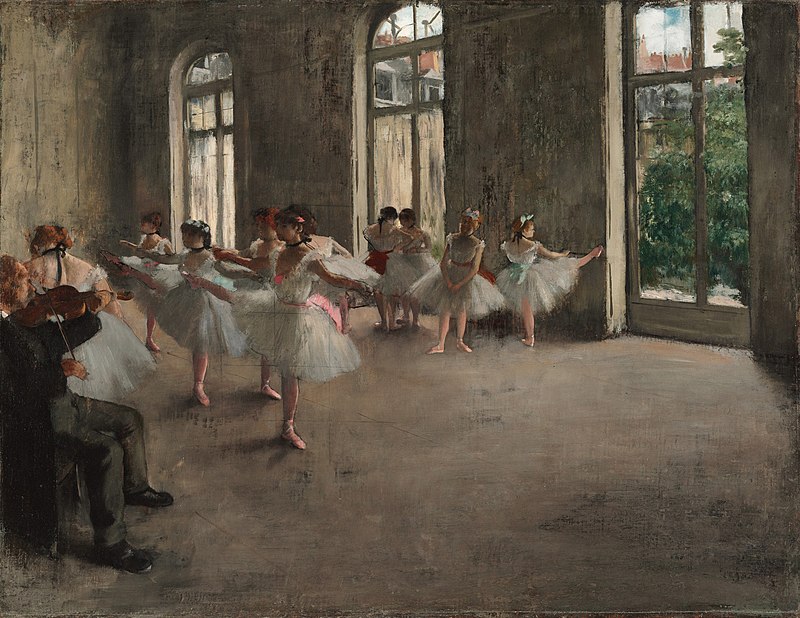By the 1870s, Degas was well-known among artist circles in France, and straddled the border between Realism and the newly developing Impressionism. Although often referred to as an Impressionist, he disdained the traditional Impressionist technique of en plein air, or painting landscapes outdoors, and always preferred to work in his studio. Between 1870 and 1874 he began his infamous paintings of dancers. Though at first glance his paintings and drawings may seem spontaneous, he was actually known to be extremely deliberate in his work, producing hundreds of study drawings like the ones below to explore every nuanced shape of the dancers' bodies.
Dancer Adjusting Her Slipper, 1873
Graphite heightened with white chalk on faded pink paper
During this formative time, Degas built on his previous knowledge of art, finally defining his own personal style. He was able to beautifully bring together modern subjects and techniques with the influence of classical artists. As he matured, he became more audacious with his artwork, exploring techniques and media from pastel to watercolor to sculpture. Below is one of his many finished pieces of dancers, portraying his fascination with viewing dancers from a behind-the-scenes perspective. In this work, the influence of both impressionism and realism is present, as well as his knack for unusual composition.
Ballet Rehearsal, 1873, Oil on Canvas.
To me, Degas is an inspiration because of his ability to intensely focus on and perfect a subject, while also being versatile enough to experiment with many different media and styles.
Sources:
Gordon, Robert, Edgar Degas, and Andrew Forge. Degas. New York: H.N. Abrams, 1988. Print.
Degas, Edgar, Felix Andreas. Baumann, Marianne Karabelnik, and Jean Sutherland. Boggs. Degas: Portraits. London: Merrell Holberton, 1994. Print.
Web:
"Edgar Degas." Encyclopædia Britannica. Encyclopædia Britannica Online Academic Edition. Encyclopædia Britannica Inc., 2012. Web. 08 Oct. 2012. <http://www.britannica.com/EBchecked/topic/155919/Edgar-Degas>.
Midgette, Anne. "Degas Defies Limits in “Dancers at the Barre”." Washington Post. The Washington Post, 30 Sept. 2011. Web. 08 Oct. 2012. <http://www.washingtonpost.com/lifestyle/style/degas-defies-limits-in-dancers-at-the-barre/2011/09/29/gIQA6HjP8K_story.html>.


No comments:
Post a Comment